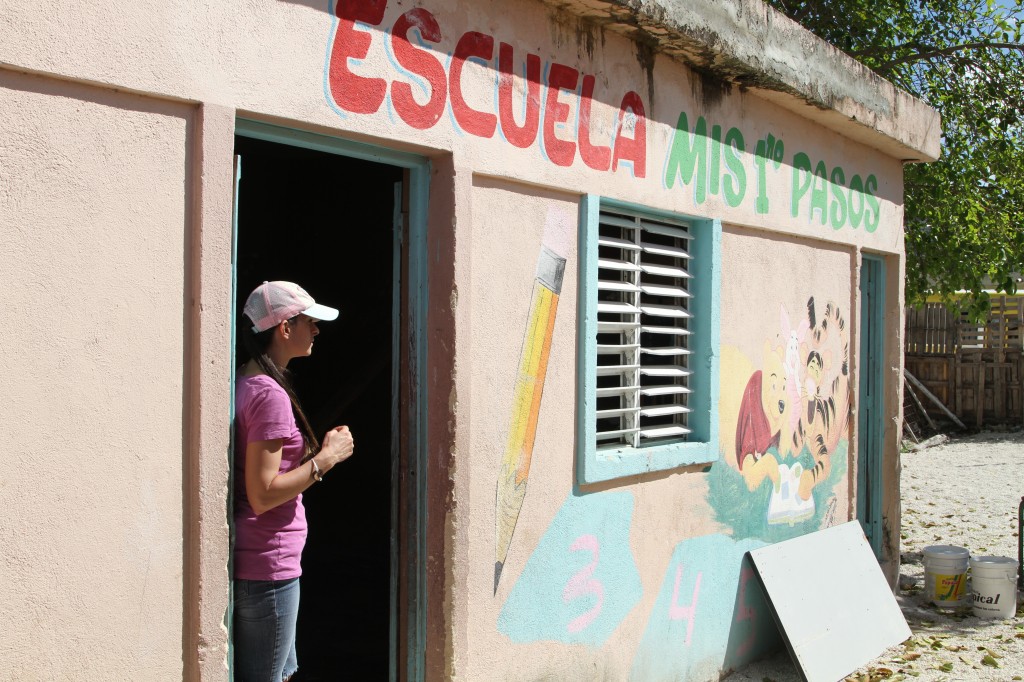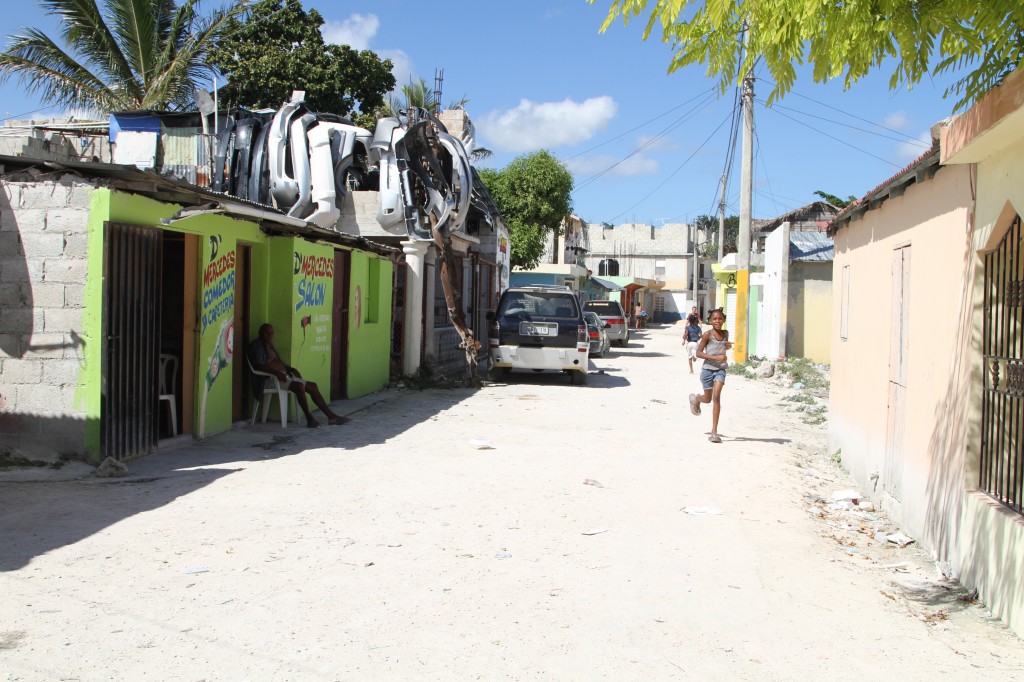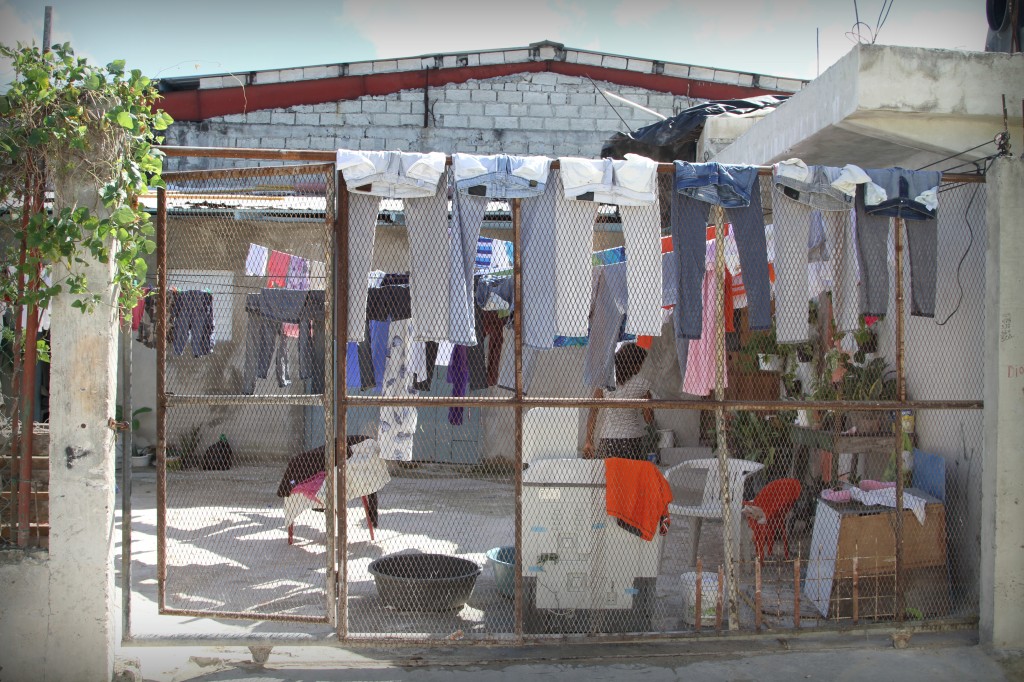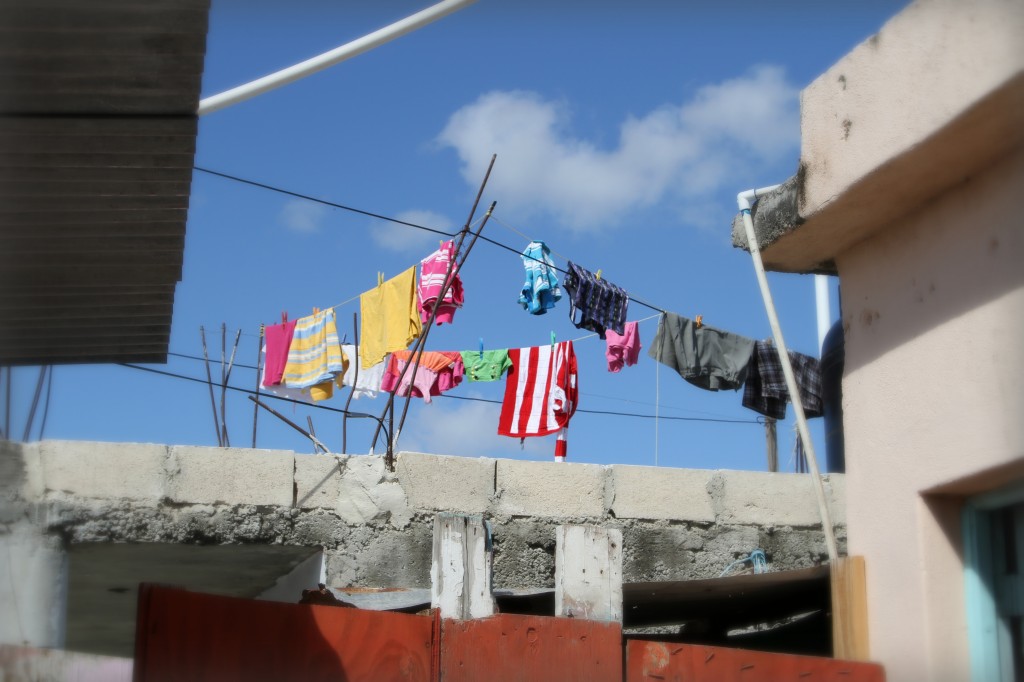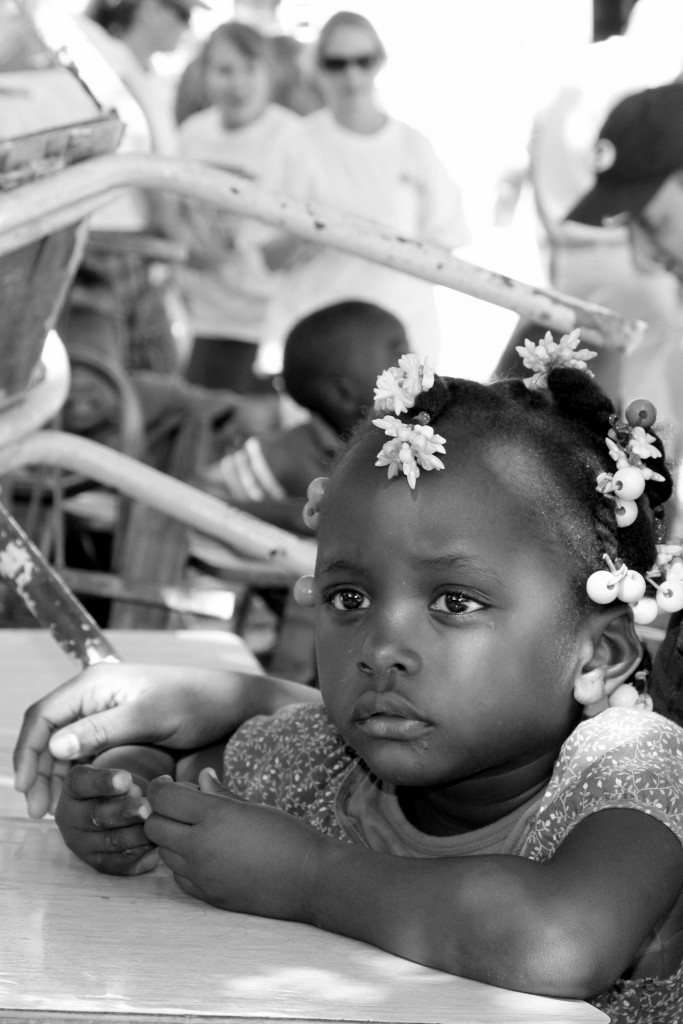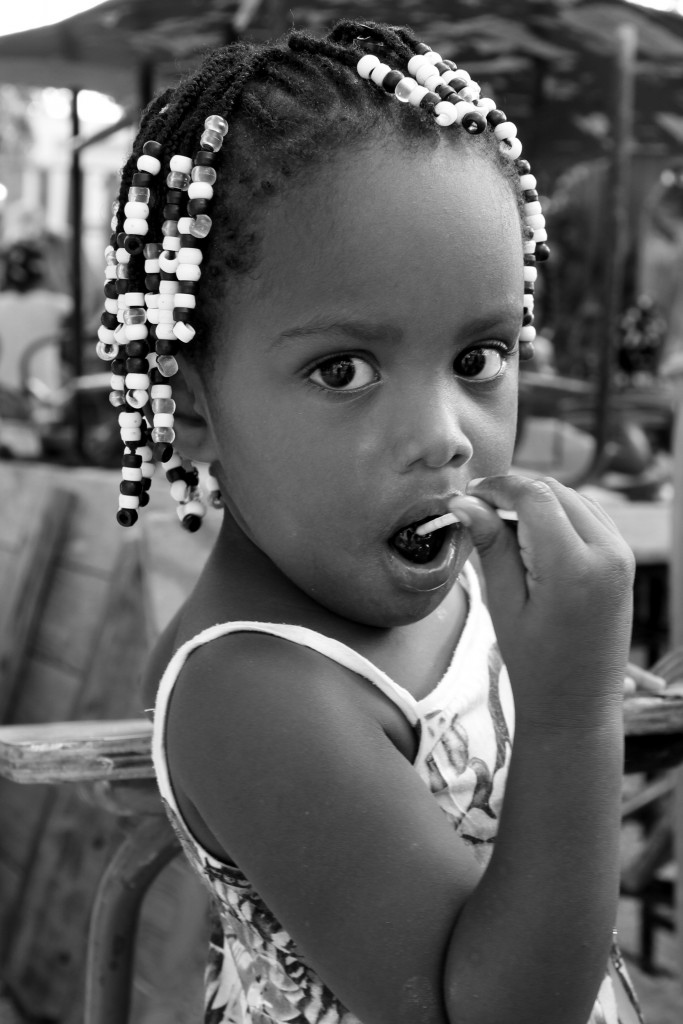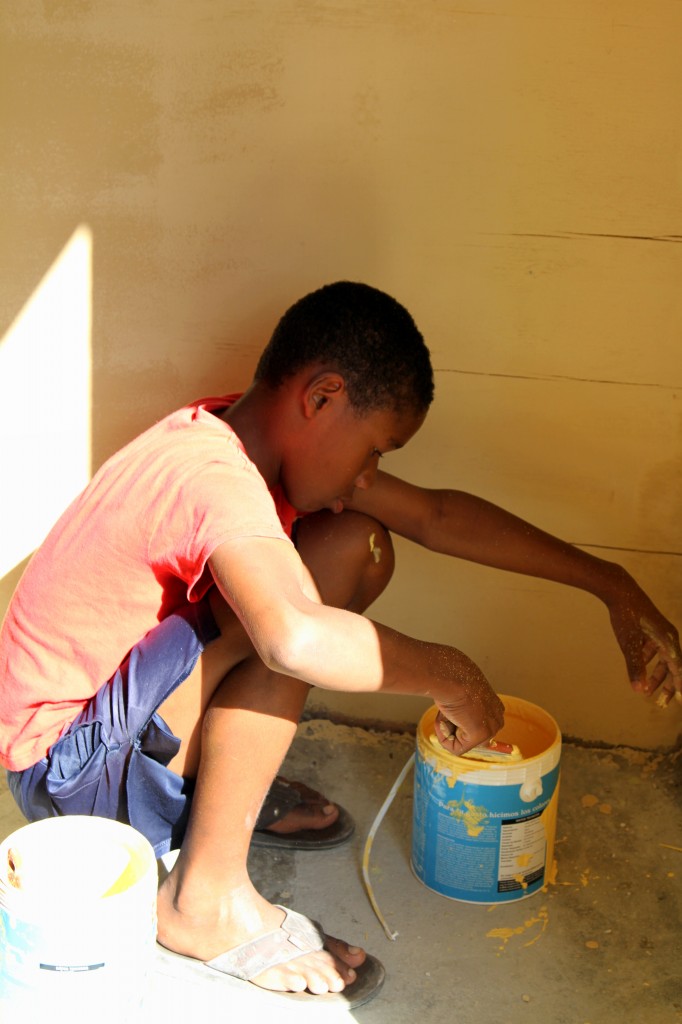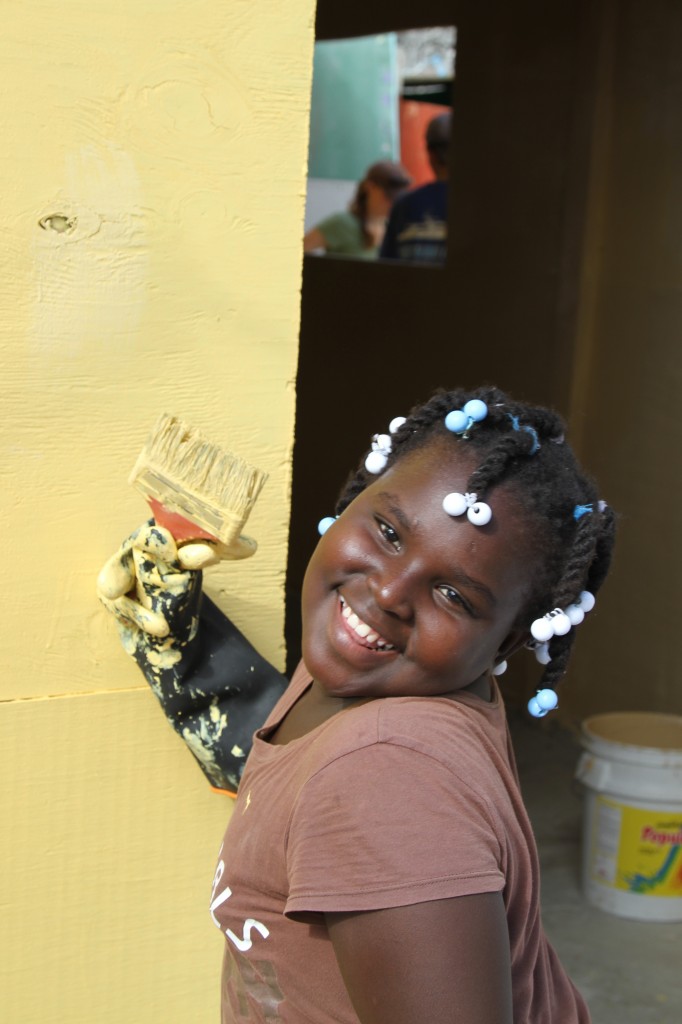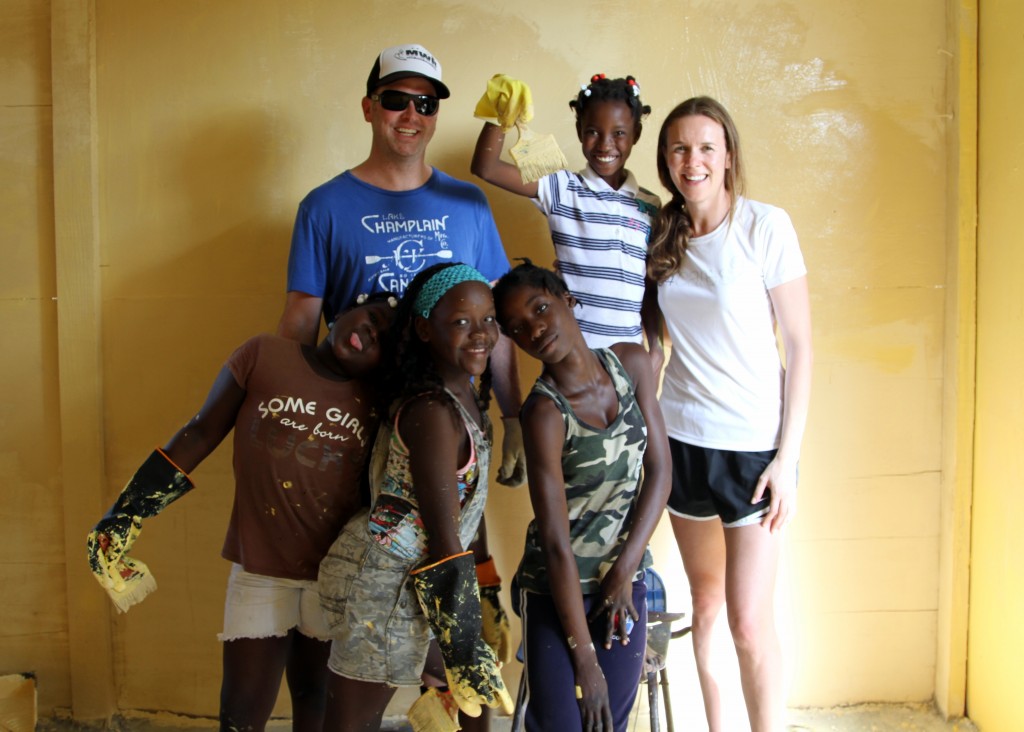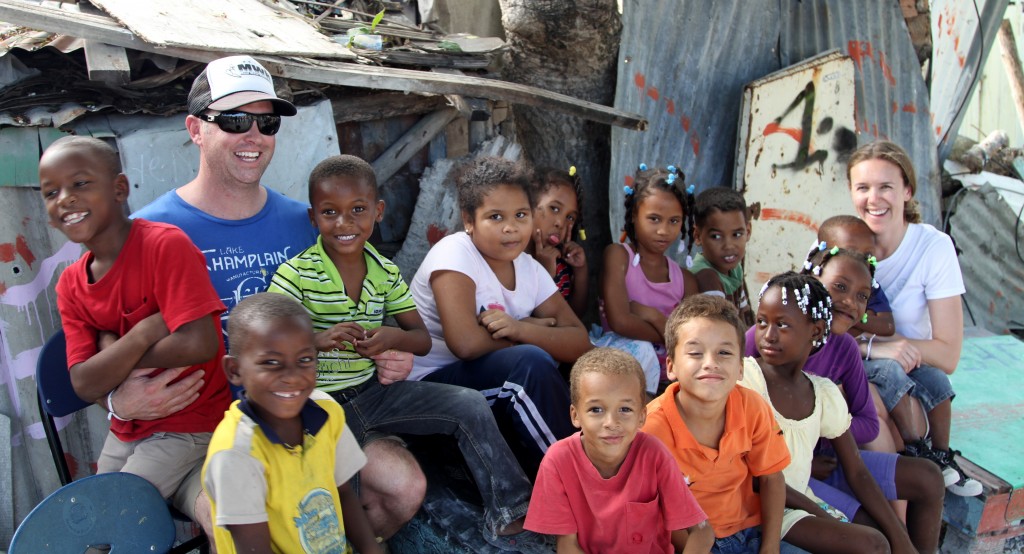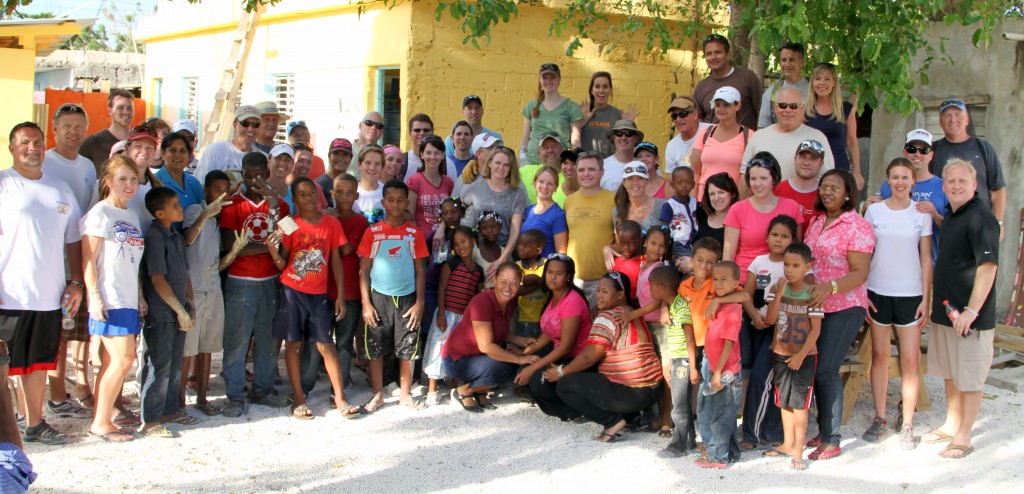I watched a young boy with bare feet run in the dirt, dragging behind him a simple handmade toy. It was fashioned from an empty milk carton, a piece of string, and scrap-wood spindles and wheels. It resembled a dump truck – the carton lying on its back with the top side removed and its insides filled with gravel. As he ran, dust kicked up from its wheels and under his naked toes. A smile spread across his face, he ducked around our bright yellow passenger van, and continued pulling his toy down the street.
I nudged my husband. “Did you see that?” I asked, as the boy disappeared. We marveled at the smile of this local Dominican child and the simple pleasure from his humble toy. We reflected on the contrast between this and the expensive toys and gadgets children have back home. Moreover, the sad fact that many are ungrateful for what they have. As toddlers, even children in the developed world garner joy from such simple things as empty boxes. When along the way does this love of simplicity diminish?
Our conversation happened during a service project in the Dominican Republic. Two dozen top business people in Salt Lake City, and their spouses, joined us. Corporate Alliance brought us together – they are an organization who help people create and manage successful business relationships. I was thrilled to be part of this trip and in particular, greatly looking forward to the service project aspect. My husband and I attended a trip with Corporate Alliance last year, where they took us to a shelter for girls in Jamaica. (I found it to be a rewarding and thought-provoking experience and wrote about it in my blog post here). This year we were to supply educational materials to a school in the Dominican Republic, and repaint it inside and out.
As my companions and I pulled up to the school in our comfortable, air-conditioned transportation, the poverty in the area struck me. The roads were dusty, iron bars covered every window and door of the nearby homes, and there was laundry strung over gates and from pieces of rope on rooftops. The buildings were rudimentary, made from cinder blocks and scraps, with rebar sticking out of multiple crevices. Around the corner, an elderly man sat on a plastic chair in the shade of a car repair shop, its spare fenders hanging precariously from its roof. The children scrambled in the dust and gravel, with nothing but the simplest of shoes covering their feet.
We entered the school gates, our arms full of supplies, snacks, and water, and were met with wide grins. To see the smiles on the faces of the children, and their teachers and parents, as they interacted with us, and as their school was improved, was heart-warming. Some of our team got to work on re-painting the school and building benches, while others of us interacted with the children and taught them games and songs. The Dominican children were friendly, respectful, and helpful. We were touched that they wanted to join in and paint their school alongside us. They grabbed brushes and paint cans of their own volition. In their enthusiasm, some children splattered their arms and faces with raindrops of the same hopeful, sunny, yellow paint that was coating their classroom walls. Rather than just be helped, they wanted to help themselves. This was powerful to me.
The school itself was very basic: a lean-to wooden shack, and a tiny two-room building: each room with a chalkboard, slatted window, concrete floor, and half a dozen simple wooden desks. An outhouse stood close-by. The playground, which also served as additional teaching space, consisted of a dusty expanse with a couple of trees for shade, and a fence cobbled together from corrugated scrap metal, chain-link, barbed wire, and wooden pallets. I imagined the schools in our local area, with their carpeted floors, and filled to the brim with books, computers, sports equipment, and art materials. This was a stark contrast.
It was humbling to witness how little these people have compared to the excesses of a First World society. A reality check for when we complain of our First World problems. I recently saw a spoof about First World problems, which sums it up in a humorous way, but reminds us of how ridiculous our ‘problems’ sometimes are, for example, complaining about having to eat leftovers, or not having the latest phone (see skit here). Do our excesses cause us stress? Does a simple life bring more happiness?
This brings me back to the boy with the milk carton truck, and his simple joy. The Dominican’s people happy outlook might seem at odds with what little so many of them have, but perhaps is because of it. We often assume that people in developing countries want what we have. However, maybe some can see beyond the luxuries of a developed world, to the problems they bring. There seems to be a certain level of peace and calm that comes with a simple life.
In our busy, distracted First World society, we are always coveting after material possessions and wanting more. It begins in childhood. The media persuades us to long for items we do not need. Children have advertising directly marketed to them. Even for the most thoughtful and diligent parents it is a battle. As adults, we fall into the yearning trap too. We can learn from countries such as the Dominican Republic. For children and adults in developed countries to consider what their peers in developing countries possess, and their level of happiness, is so worthwhile.
Participating in a project like this is humanizing. It enables us to think about others, to be compassionate, understanding, and giving. It offers us perspective. It helps us to be thankful for what we have, and to realize we do not need all that we have. It reminds us of the child in us, happy playing with an empty cardboard box. It encourages us to reflect on the important things in life, and that simple things are what matter and what ultimately make us happy. When we take part in a service project, not only do we help someone else, but it helps us too.
Lydia
I am so grateful to the group we travelled with, Corporate Alliance. Beyond the service project, I learned a great deal from their organization’s ethos and values, and from the fascinating people with me on the trip. I will tell you about that in my next blog post: Service Project Part II –Pearls of Wisdom.
Some of my photographs from the project:
